Worksmith’s art was dedicated to the ancient Egyptian god Amun; Egyptian officials tout find in bid to revive ailing tourism industry

Archaeologists work on mummies found in the New Kingdom tomb that belongs to a royal goldsmith, in a burial shaft, in Luxor, Egypt, Saturday, Sept. 9, 2017. (AP Photo/Nariman El-Mofty)
LUXOR, Egypt (AP) — Egypt on Saturday announced the discovery in the southern city of Luxor of a pharaonic tomb belonging to a royal goldsmith who lived more than 3,500 years ago and whose work was dedicated to the ancient Egyptian god Amun.
The tomb, located on the west bank of the river Nile in a cemetery for noblemen and top officials, is a relatively modest discovery, but one that authorities have announced with a great deal of fanfare in a bid to boost the country’s slowly recovering tourism industry.
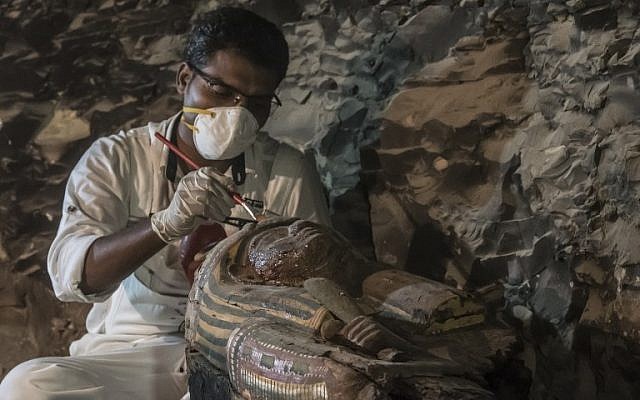 A picture taken on September 9, 2017 shows Egyptian archaeologist restoring a wooden sacrophagus at a newly-uncovered ancient tomb for a goldsmith dedicated to the ancient Egyptian god Amun, in the Draa Abul Naga necropolis on the west bank of the ancient city of Luxor, which boasts ancient Egyptian temples and burial grounds.(AFP PHOTO / KHALED DESOUKI)
A picture taken on September 9, 2017 shows Egyptian archaeologist restoring a wooden sacrophagus at a newly-uncovered ancient tomb for a goldsmith dedicated to the ancient Egyptian god Amun, in the Draa Abul Naga necropolis on the west bank of the ancient city of Luxor, which boasts ancient Egyptian temples and burial grounds.(AFP PHOTO / KHALED DESOUKI)
“We want tomorrow’s newspapers to speak about Egypt and make people want to come to Egypt,” Antiquities Minister Khaled el-Anani told reporters, reflecting the country’s desperate need to revitalize tourism.
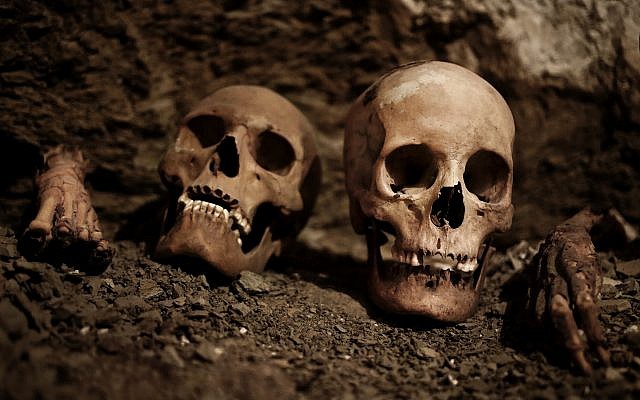 Skulls found in the New Kingdom tomb that belongs to a royal goldsmith are seen in a burial shaft, in Luxor, Egypt, Saturday, Sept. 9, 2017. (AP Photo/Nariman El-Mofty)
Skulls found in the New Kingdom tomb that belongs to a royal goldsmith are seen in a burial shaft, in Luxor, Egypt, Saturday, Sept. 9, 2017. (AP Photo/Nariman El-Mofty)
El-Anani said the tomb was not in good condition, but contained a partially damaged sandstone statue of the goldsmith, named Amenemhat, and his wife. Between the couple stands a smaller figure of one of their sons.
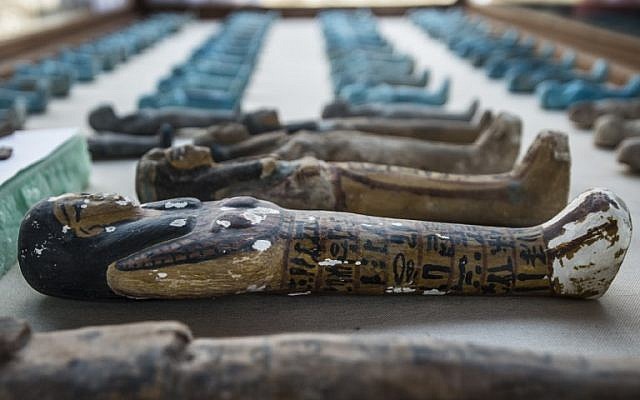 A picture taken on September 9, 2017 shows small funerary statues carved in wood, clay and limestone recovered at the site of a newly-uncovered ancient tomb for a goldsmith dedicated to the ancient Egyptian god Amun, in the Draa Abul Naga necropolis on the west bank of the ancient city of Luxor, which boasts ancient Egyptian temples and burial grounds. (AFP PHOTO / KHALED DESOUKI)
A picture taken on September 9, 2017 shows small funerary statues carved in wood, clay and limestone recovered at the site of a newly-uncovered ancient tomb for a goldsmith dedicated to the ancient Egyptian god Amun, in the Draa Abul Naga necropolis on the west bank of the ancient city of Luxor, which boasts ancient Egyptian temples and burial grounds. (AFP PHOTO / KHALED DESOUKI)
The tomb has two burial shafts, one of which was likely dug to bury the mummies of the goldsmith and his wife. It also contained wooden funerary masks and a collection of statues of the couple, according to a ministry statement. Three mummies were found in the shaft.
Get The Times of Israel’s Daily Editionby email and never miss our top storiesNewsletter email addressBy signing up, you agree to the terms
It said a second shaft contained a collection of sarcophagi from the 21st and 22nd dynasties.
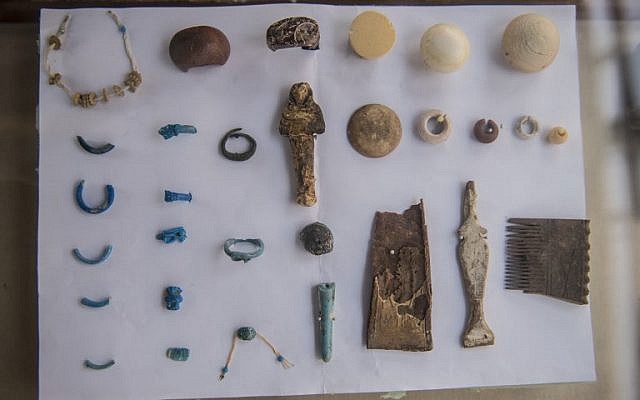 A picture taken on September 9, 2017 shows ornaments recovered at the site of a newly-uncovered ancient tomb for a goldsmith dedicated to the ancient Egyptian god Amun, in the Draa Abul Naga necropolis on the west bank of the ancient city of Luxor, which boasts ancient Egyptian temples and burial grounds.(AFP PHOTO / KHALED DESOUKI)
A picture taken on September 9, 2017 shows ornaments recovered at the site of a newly-uncovered ancient tomb for a goldsmith dedicated to the ancient Egyptian god Amun, in the Draa Abul Naga necropolis on the west bank of the ancient city of Luxor, which boasts ancient Egyptian temples and burial grounds.(AFP PHOTO / KHALED DESOUKI)
The tomb belonged to the 18th pharaonic dynasty when Amun was the most powerful deity. It was discovered by Egyptian archeologists, something that a senior official at the Antiquities Ministry hailed as evidence of their growing professionalism and expertise.
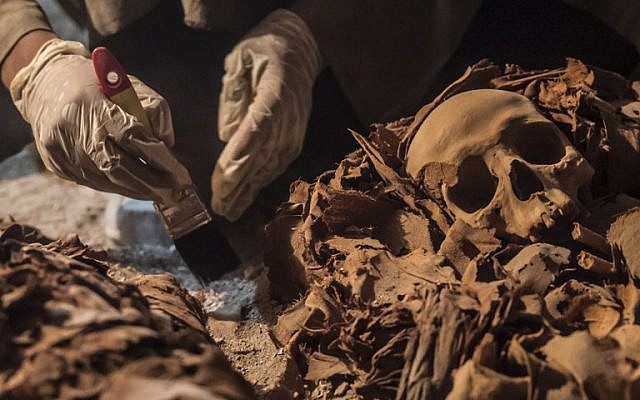
A picture taken on September 9, 2017 shows an Egyptian labourer unearthing mummies at a newly-uncovered ancient tomb for a goldsmith dedicated to the ancient Egyptian god Amun, in the Draa Abul Naga necropolis on the west bank of the ancient city of Luxor, which boasts ancient Egyptian temples and burial grounds. (AFP PHOTO / KHALED DESOUKI)
“We used to escort foreign archeologists as observers, but that’s now in the past. We are the leaders now,” said Mustafa Waziri, the ministry’s chief archaeologist in Luxor.





